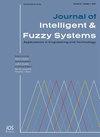实时云安全和监控的车载自组织网络的数字孪生行为洞察
IF 1
4区 计算机科学
Q3 COMPUTER SCIENCE, ARTIFICIAL INTELLIGENCE
引用次数: 0
摘要
由于VANET和云计算技术的融合,车辆自组织网络(VANET)技术正在不断发展,车辆自组织网络(VANET)实体可以从云服务提供商有利的存储和计算能力中受益。云计算,即各种云服务提供商提供的处理和存储能力,将提供给所有VANET企业。Digital Twin有助于创建车辆的数字视图。它专注于车辆的物理行为,以及当发现性能问题时发出警报的软件。车辆的表示是使用智能传感器创建的,这些传感器位于VANET的OBU中,可以帮助收集产品的信息。本文介绍了基于云的VANET三层密钥管理。由于VANET连接可能突然改变,关键协商验证必须以最小的带宽快速完成。当车辆在运行时,我们面临着及时方法、网络稳定性以及路由可靠性和可扩展性等问题。我们还必须解决诸如公平网络接入、不当行为识别、取消、认证过程、保密性和车辆可信度验证等问题。本研究提出的全轮控制(AWC)方法可以提高自动驾驶汽车的安全性和效率。这项技术也将有利于未来的智能交通系统。RSA (Rivest-Shamir-Adleman)算法和中国剩余定理算法在组、子组和节点级别生成密钥。与以往的方法相比,该方法的效果更好。本文章由计算机程序翻译,如有差异,请以英文原文为准。
An insight into digital twin behavior of vehicular ad hoc network for real-time cloud security and monitoring
Vehicular Ad-Hoc Network (VANET) Technology is advancing due to the convergence of VANET and cloud computing technologies, Vehicular Ad-Hoc Network (VANET) entities can benefit from the cloud service provider’s favourable storage and computing capabilities. Cloud computing, the processing and storage capabilities provided by various cloud service providers, would be available to all VANET enterprises. Digital Twin helps in creating a digital view of the Vehicle. It focuses on the physical behaviour of the Vehicle as well as the software it alerts when it finds issues with the performance. The representation of the Vehicle is created using intelligent sensors, which are in OBU of VANET that help collect info from the product. The author introduces the Cloud-based three-layer key management for VANET in this study. Because VANET connections can abruptly change, critical negotiation verification must be completed quickly and with minimal bandwidth. When the Vehicles are in movement, we confront the difficulty in timely methods, network stability, and routing concerns like reliability and scalability. We must additionally address issues such as fair network access, inappropriate behaviour identification, cancellation, the authentication process, confidentiality, and vehicle trustworthiness verification. The proposed All-Wheel Control (AWC) method in this study may improve the safety and efficiency of VANETs. This technology would also benefit future intelligent transportation systems. The Rivest–Shamir–Adleman (RSA) algorithm and Chinese Remainder Theorem algorithms generate keys at the group, subgroup, and node levels. The proposed method produces better results than the previous methods.
求助全文
通过发布文献求助,成功后即可免费获取论文全文。
去求助
来源期刊

Journal of Intelligent & Fuzzy Systems
工程技术-计算机:人工智能
CiteScore
3.40
自引率
10.00%
发文量
965
审稿时长
5.1 months
期刊介绍:
The purpose of the Journal of Intelligent & Fuzzy Systems: Applications in Engineering and Technology is to foster advancements of knowledge and help disseminate results concerning recent applications and case studies in the areas of fuzzy logic, intelligent systems, and web-based applications among working professionals and professionals in education and research, covering a broad cross-section of technical disciplines.
 求助内容:
求助内容: 应助结果提醒方式:
应助结果提醒方式:


